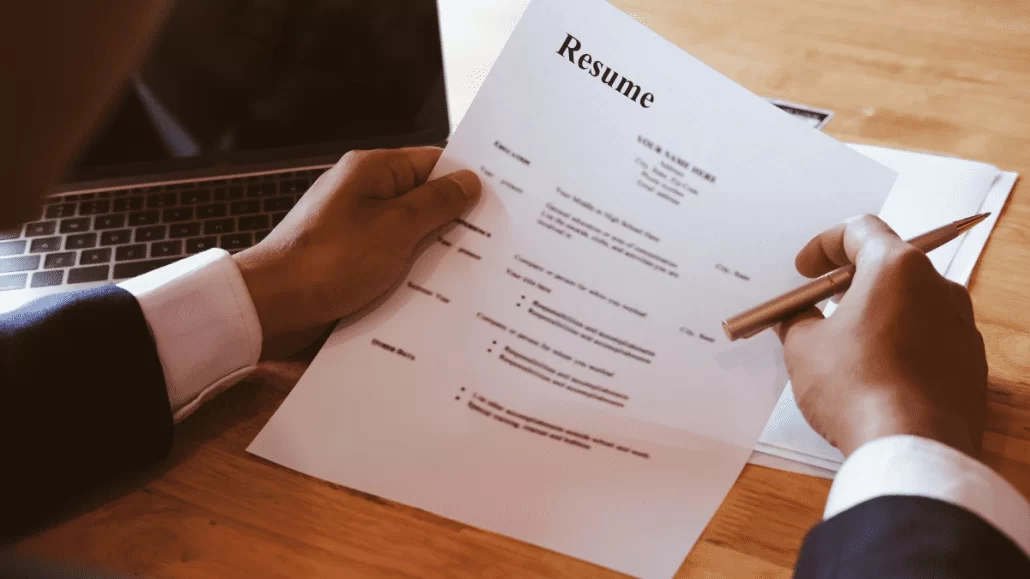A professional CV is a vital tool in making a positive impression on prospective employers. Below is a step-by-step guide on how to write a professional CV that highlights your abilities, experience, and accomplishments.
Step 1: Identify Your Goal
- Set Your Career Goals: Clearly state your career goals and the job type you’re seeking.
- Customize Your CV: Make your CV adaptable to the specifications of the job you are applying for.
Step 2: Select a CV Layout
- Chronological Layout: Best for individuals with extensive work experience, emphasizing career development and success.
- Functional Layout: Best for individuals with gaps in employment or those changing careers, focusing on skills and qualifications.
- Combination Layout: A mix of chronological and functional layouts, emphasizing both work experience and skills.
Step 3: Write Your Header
- Full Name: Your full name as it is written on your passport or ID documents.
- Contact Information: Phone number, email address, and LinkedIn (if available).
- Professional Summary: Brief summary of your experience, skills, and career goals.
Step 4: List Your Education
- Degree and Institution: Degree earned, institution attended, and the dates attended.
- Relevant Coursework: State relevant courses or specializations that support the job requirements.
- Academic Achievements: State any academic accomplishments, including scholarships or awards.
Step 5: Emphasize Your Work Experience
- Job Title and Company: State your job title, company name, and employment dates.
- Responsibilities and Achievements: State your job responsibilities and emphasize your achievements and contributions.
- Quantifiable Results: Quantify using numbers and statistics to show how your work has made a difference.
Step 6: Exhibit Your Skills
- Technical Skills: Enumerate any technical skills in which you are skilled, e.g., programming languages or software proficiency.
- Soft Skills: Emphasize your soft skills, e.g., communication, teamwork, or problem-solving.
- Language Skills: Include any language that you are fluent in.
Step 7: Add Relevant Sections
- Projects: Explain any projects that are applicable to you, such as your contribution and accomplishments.
- Certifications: List any applicable certifications or licenses.
- Volunteer Work: Add any volunteer work or extracurricular activity which reflects your skills or personality.
Step 8: Proofread and Edit
- Spelling and Grammar: Carefully proofread your CV to make sure there are no spelling or grammar mistakes.
- Consistency: Make sure there is consistency in the format, punctuations, and style.
- Clarity: Write clearly and concisely to effectively get your point across.
Step 9: Obtain Feedback
- Peer Review: Have a friend or mentor check your CV for feedback.
- Professional Review: Pay a professional CV writer or career counselor to give you professional advice.
Step 10: Complete and Update
- Complete Your CV: Once you’re happy with your CV, complete it and save it in an appropriate format (e.g., PDF).
- Update Regularly: Update your CV regularly to reflect changes in your experience, skills, and career goals.
Tips to Enhance Your CV
- Use Keywords: Use keywords from the job you are applying for to enable your CV to get past applicant tracking systems (ATS).
- Use Action Verbs: Use action verbs such as “managed,” “created,” and “developed” to describe your accomplishments.
- Keep it Concise: Keep your CV concise and focused on the most significant details.
CV Writing Tips for Various Industries
- Creative Industries: Employ a more creative and visually engaging format to highlight your experience and skills.
- Technical Industries: Highlight your technical experience and skills, and employ industry-specific jargon.
- Corporate Industries: Employ a more professional and formal tone, and accentuate your business skills and leadership.
Common CV Mistakes to Avoid
- Typos and Grammar Mistakes: Steer clear of typos and grammar mistakes that can leave a poor impression.
- Irrelevant Details: Stripping away any irrelevant details that do not bring value to your CV.
- No Quantifiable Outcomes: Quantify the outcomes of your work with numbers and data.
Conclusion
Crafting a professional CV involves planning, writing, and editing with care. By following these steps and customizing your CV to suit the job description, you can make yourself a strong contender for impressing prospective employers. Keep your CV as concise, clear, and focused on the most relevant details as possible.
Final Check
- Review Your CV: Double-check your CV for errors and its overall effectiveness.
- Get Feedback: Seek feedback from others to guide you to make your CV better.
- Update Your CV: Update your CV routinely to record changes in your experience, skills, and career goals.
By adopting these steps and tips, you can prepare a professional CV that highlights your skills, experience, and accomplishments




